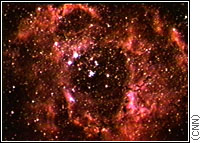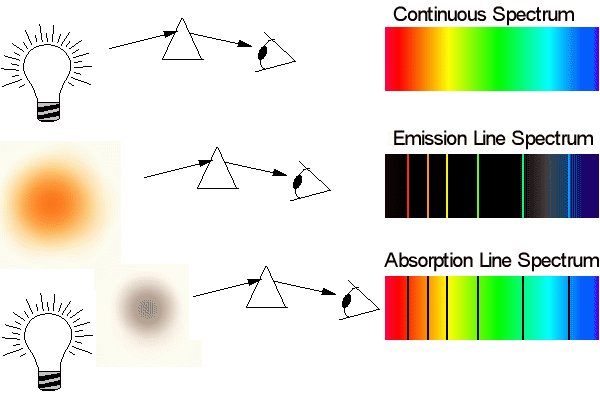Light and Astronomy
1. A hot object or hot dense gas (like a star) produces a continuous spectrum -- the
complete "rainbow" of colors without any dark lines in it.
2. A hot rarefied gas produces an emission line spectrum -- a series of
bright lines on a dark background.

3. Light passing through a cool gas (like the cool gas in a star's atmosphere)
produces an absorption line spectrum -- dark lines along certain colors of the rainbow.

(the above is courtesy Terry Herter's website)
The Sun's absorption line spectrum

back | next | index



